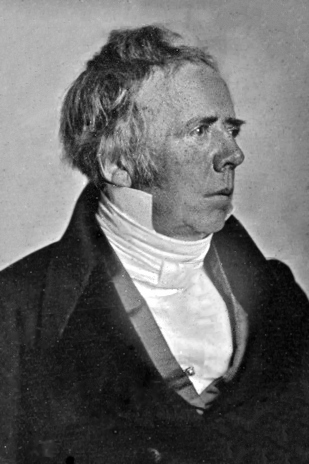Hans Christian Ørsted
Hans Christian Ørsted is a very important physicist and chemist who first discovered that electric currents induce magnetic fields. Because of his work, not only was a law and a unit of measurement named after him, but Ørsted is considered to be one of the leaders of the Danish Golden Age.
History
Personal Life
Ørsted was born in Rudkøbing, Denmark, to a pharmacist father who inspired his love for science. He enrolled in the University of Copenhagen in 1793 alongside his brother Anders - Hans studied medicine, physics and astronomy, while Anders studied law - and received a degree in pharmacy in 1797 and a PhD two years later. Hans' dissertation was titled "On the Form of an Elementary Metaphysics of External Nature" and was heavily influenced by Immanuel Kant. In particular, Ørsted firmly believed in Kant's idea that "a rational doctrine of nature deserves the name of natural science only when the natural laws at its foundation are cognized a priori, and are not mere laws of experience". It has even been theorized that Ørsted was initially rejected for a university chair position at Copenhagen because of his strong philosophical views; he later gained the position by demonstrating mass audience appeal for his lectures.
After graduation, Ørsted received a travel scholarship and spent it touring Europe, visiting notable philosophers such as Johann Gottlieb Fichte (founder of German idealism), Karl Wilhelm Friedrich Schlegel (Jena romantics), Friedrich Wilhelm Joseph Schelling (German idealism), and Johann Wilhelm Ritter, the latter of whom first influenced Ørsted's thinking that electricity and magnetism are related.
Intrigued, Ørsted returned to the University of Copenhagen and became a physics professor, researching electric currents and acoustics. And here is where the well-known tale begins.
The Discovery
Ørsted was teaching a lecture one evening in 1820 and noticed that turning an electric current on and off caused the needle of a compass sitting nearby to deflect. After extensive researching, he found that the magnetic needle aligns itself perpendicularly to a current in a wire, and that the magnetic field induced was overall circular in relation to the wire. This finding was later coupled with work done by André-Marie Ampère, who added the factor of time to create part of what is now Maxwell's equations; Ørsted's law in itself considers current to be constant over time.
Additional Contributions to Science and Otherwise
In a multidisciplinary twist, Ørsted also discovered piperine, a component of pepper, in 1820 and was the first to isolate metallic aluminum in 1825. He also founded the Den Polytekniske Læreanstalt ('College of Advanced Technology') which later became the Technical Institute of Denmark (DTU) in 1829,
Accolades
1822: Elected as foreign member of Royal Swedish Academy of Sciences 1950 to 1970: 100 danske kroner note had his face on it 1999: First Danish satellite was named after him
Examples
What are the mathematical equations that allow us to model this topic. For example [math]\displaystyle{ {\frac{d\vec{p}}{dt}}_{system} = \vec{F}_{net} }[/math] where p is the momentum of the system and F is the net force from the surroundings.
Examples
Be sure to show all steps in your solution and include diagrams whenever possible
Simple
Middling
Difficult
Connectedness
- How is this topic connected to something that you are interested in?
- How is it connected to your major?
- Is there an interesting industrial application?
See also
http://news.nationalgeographic.com/news/2009/08/090814-hans-christian-orsted-oersted-who.html
Further reading
Books, Articles or other print media on this topic
External links
Internet resources on this topic
References
http://en.aros.dk/about-aros/press/2013/gold-treasures-from-the-danish-golden-age/ http://www.britannica.com/biography/Hans-Christian-Orsted http://people.seas.harvard.edu/~jones/cscie129/nu_lectures/lecture5/oersted/oersted.html http://www-personal.umich.edu/~jbourj/photogallery/photo00008310/oersted1.jpg https://en.wikipedia.org/wiki/Hans_Christian_%C3%98rsted https://en.wikipedia.org/wiki/Oersted%27s_law
